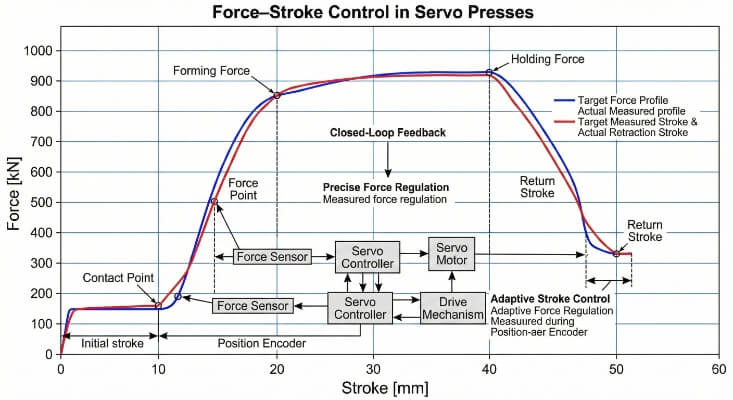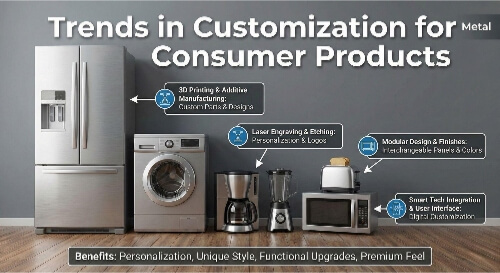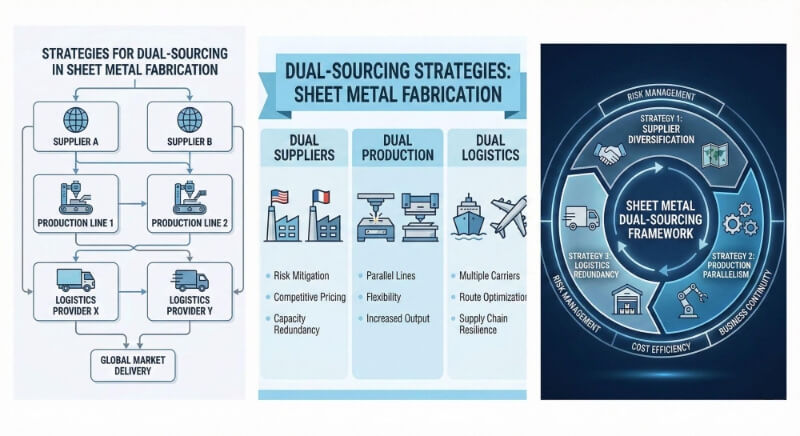Several factors must be considered when choosing between powder coating and anodizing to get the best outcome for your project. Want to know more? I’ll explain the main differences between these two popular finishes.
Anodizing creates a protective oxide layer on the metal surface, offering exceptional durability and corrosion resistance. It’s ideal for aluminum parts, enhancing both aesthetics and functionality. Powder coating provides a thicker finish with various colors and textures, suitable for metals like steel and aluminum. Each method has strengths and depends on your specific requirements.
How do you choose the right finish for your project, though? Continue reading to learn about the factors that will help you make a well-informed decision.
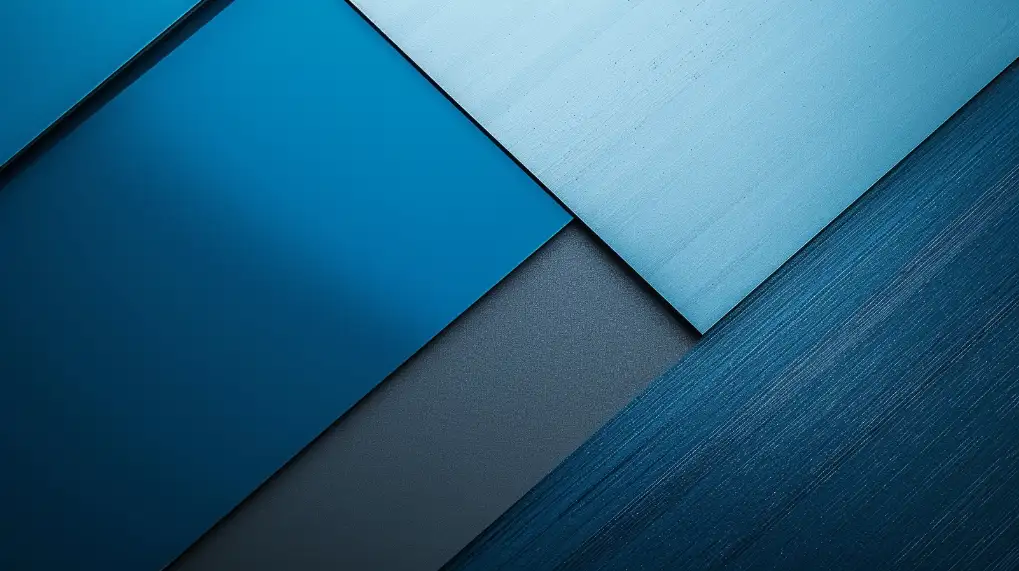
What is Anodizing?
Anodizing is an electrochemical process that thickens the natural oxide layer on the surface of metals like aluminum. This process increases the metal’s resistance to corrosion and wear while improving its appearance.
Anodizing works through an electrolytic reaction. The metal is placed in an acid bath, and a direct electrical current is passed through it. This reaction causes the surface of the metal to oxidize, forming a thick and durable protective layer.
During anodizing, the metal acts as the anode in the electrical circuit. The acid solution, often sulfuric acid, serves as the electrolyte. The electrical current causes oxygen to form on the metal’s surface. This oxygen combines with the metal to create the oxide layer.
Types of Anodizing: Sulfuric, Hardcoat, and Chromic
- Sulfuric Anodizing: This is the most common method used for aluminum. It creates a thin, porous oxide layer. This layer can be dyed, giving the metal a colorful finish.
- Hardcoat Anodizing: This method creates a thicker, stronger oxide layer. It is perfect for situations that require more durability and wear resistance.
- Chromic Anodizing: Often used in aerospace and military applications, this method results in a thinner oxide layer. It offers excellent corrosion resistance and is less brittle than other types.
Benefits of Anodizing
Anodizing has many benefits that make it a popular choice for metal finishing.
Enhanced Corrosion Resistance
Anodizing makes metal much more resistant to rust. The thick oxide layer formed during the process helps the metal withstand outdoor or harsh conditions.
Improved Aesthetic Qualities
Anodizing strengthens the metal and enhances its appearance. The porous surface can be dyed in different colors for various finishes.
Increased Durability
Anodized metals are more complex than untreated metals, making them resistant to scratches and wear. This added durability makes anodizing ideal for products facing heavy use or harsh environments.
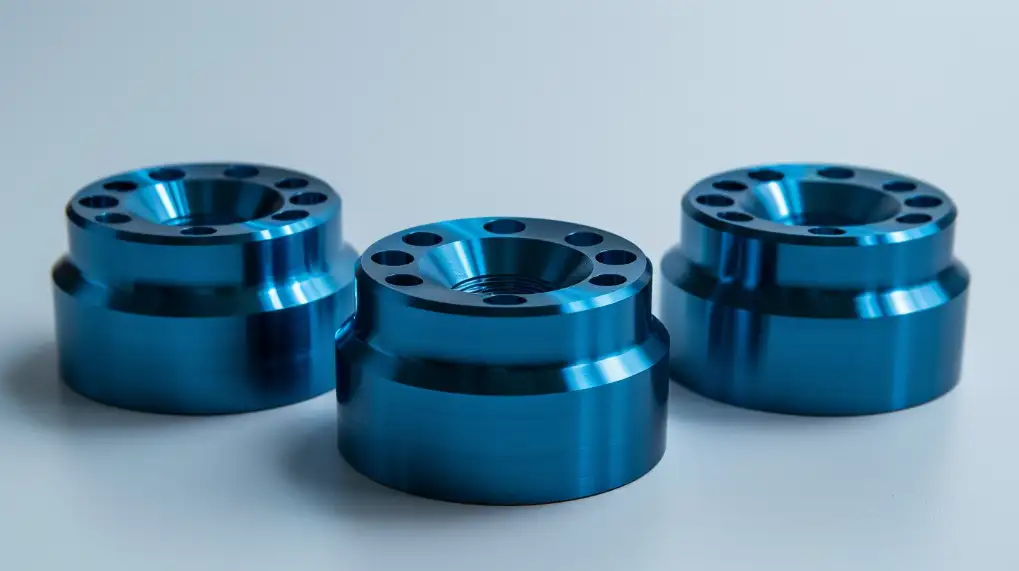
What is Powder Coating?
Powder coating is a dry finishing process in which a fine powder is applied to the metal surface. The powder is then heated to form a smooth, strong coating. This coating not only improves the appearance of the metal but also provides excellent protection against environmental damage.
Powder coating happens in two main steps: applying and curing the powder.
The first step is applying the powder to the metal surface using an electrostatic gun. The powder particles are given an electrical charge, making them stick to the grounded metal. This ensures the coating is even and uniform.
After applying the powder, the metal is placed in an oven. The heat melts the powder, allowing it to flow and bond to the surface. Once it cools and hardens, it forms a solid, durable layer.
Benefits of Powder Coating
Powder coating has several advantages over traditional liquid coatings, making it a popular choice for many uses.
High Durability and Resistance
Powder coating gives a tough finish that resists scratches, chips, fading, and wear. It also provides excellent protection against corrosion, making it perfect for indoor and outdoor use.
Variety of Finish Options
One of the most significant advantages of powder coating is the variety of finishes available. It comes in different textures, colors, and gloss levels. This flexibility allows designers and manufacturers to achieve the exact look they want.
Environmental Benefits
Powder coating is more eco-friendly than liquid coatings. It doesn’t need solvents, and the process creates little waste. Any leftover powder can be collected and reused, reducing waste and making it a more sustainable choice.
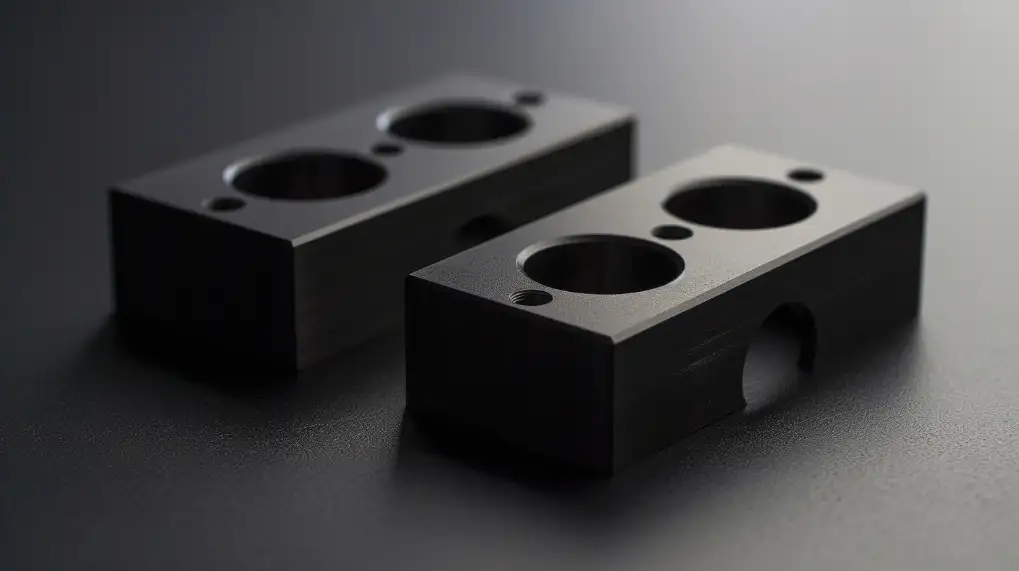
Comparison of Anodized vs Powder Coating
Choosing between anodizing and powder coating? Let’s compare them head-to-head. See how they stack up in durability, looks, and performance for your specific needs.
Durability and Wear Resistance
Anodized surfaces are more resistant to scratches and abrasions because of the hard oxide layer that forms on the metal. This makes anodizing ideal for items exposed to heavy use, such as aerospace parts or high-traffic surfaces.
Powder coating is durable and resistant to impacts, fading, and UV damage. While it isn’t as scratch-resistant as anodizing, it can still handle heavy use. It works well for outdoor furniture, car parts, and industrial equipment.
Corrosion Resistance: Anodized vs Powder Coating
The oxide layer bonds directly with the metal, making it highly resistant to moisture and salt. This is particularly useful for marine or outdoor environments.
Powder coating also resists corrosion, especially when appropriately applied. However, it can chip in high-impact areas, which might weaken its corrosion resistance in those spots. For the best protection, powder coating is often combined with a primer or other treatments.
Aesthetic Qualities: Which Finish Offers More Visual Appeal?
Both anodizing and powder coating have unique aesthetic advantages. Anodizing creates a natural metallic look. It can be dyed to add color, but the finish is more subtle. The texture is often matte or satin, giving it an industrial feel.
Powder coating offers more color and finish options. It can range from glossy to matte and from smooth to textured. This gives more flexibility in achieving a specific look.
Environmental Impact of Each Process
Anodizing uses fewer chemicals and generates less waste. The anodized surface is non-toxic, making it safe for various applications, including food-related items.
Powder coating is even more eco-friendly. It doesn’t release VOCs like liquid paints do, and the excess powder can be recycled, reducing waste. It also doesn’t require solvents, which helps reduce environmental impact.
Application Methods and Ease of Use
Anodizing is a more complex process. It requires precise control over current, temperature, and bath composition. This makes it more time-consuming and expensive for some applications.
Powder coating is easier to apply. It can be done on small batches or large runs, and the process is faster. It is also more cost-effective because it requires less equipment.
Comparison Table:
| Characteristics | Anodizing | Powder Coating |
|---|---|---|
| Type | Electrochemical process | Electrostatic process |
| Surface Finish | Matte or satin texture | Glossy, matt, or satin textures |
| Eco-friendliness | Good | Excellent |
| Durability | Excellent | Good |
| Cost | High | Moderate |
| Corrosion Resistance | Excellent | Good |
| Colour Options | Limited colours | Wide range of colours |
| Colour Fading Resistance | Poor | Excellent |
Performance in Extreme Conditions
Will your finish stand up to real-world abuse? We put anodizing and powder coating to the test in harsh conditions. See which performs best when pushed to the limits.
High-Temperature Environments
Anodizing handles heat better. The oxide layer can withstand 400°F+ (204°C+) without degrading. Powder coating starts discoloring above 300°F (149°C) and may soften.
Anodizing is the preferred method for engine parts or cookware. Powder coating is used for outdoor gear that gets warm but not extreme heat.
UV Resistance and Fading
Powder coating resists UV better. Modern formulas keep colors vibrant for years outdoors. Anodized colors fade faster in direct sunlight unless sealed with UV-protective topcoats.
For signs or outdoor fixtures, powder coating often lasts longer without yellowing or dulling.
Scratch and Abrasion Resistance
Anodizing is harder (like sapphire on the Mohs scale). It resists keys, tools, or sand abrasion. Powder coating is tougher than paint but can still scratch.
Anodizing outperforms for high-wear items (tool housings, industrial gear). Powder coating suits surfaces needing less abrasion resistance.
Choosing the Right Coating for Your Project
Ready to pick the perfect finish? Let’s break down what matters most for your specific application.
Budget and Time Factors
Powder coating costs less for most jobs. Setup is more straightforward, and turnaround is faster. Anodizing requires specialized equipment, raising prices for small batches.
Need it cheap and quick? Powder coat. For the long-term value of aluminum, anodizing may save replacement costs.
Appearance Needs
Want bold colors or special effects? Powder coating offers endless options. Prefer a sleek metallic look? Anodizing shows aluminum’s natural beauty.
Consider your brand image: anodizing looks technical, and powder coating looks consumer-friendly.
Environmental and Performance Demands
For outdoor use, powder coating better withstands UV. For chemical exposure, anodizing resists solvents. For saltwater, anodizing wins for marine applications.
Match the finish to your product’s worst-case scenario.
Conclusion
The right choice between anodized and powder-coated finishes depends on your project’s needs. Anodizing provides better corrosion resistance, durability, and heat resistance. However, it has fewer color options and requires specialized processes.
Powder coating offers a broader range of colors and finishes. It also provides excellent UV resistance and environmental benefits. Powder coating is more cost-effective and versatile, ideal for projects requiring less demanding performance.
Ready to choose the right coating for your project? Contact us today to discuss your needs and receive a custom quote. Our team is ready to help you find the best solution for your manufacturing needs.
Hey, I'm Kevin Lee

For the past 10 years, I’ve been immersed in various forms of sheet metal fabrication, sharing cool insights here from my experiences across diverse workshops.
Get in touch

Kevin Lee
I have over ten years of professional experience in sheet metal fabrication, specializing in laser cutting, bending, welding, and surface treatment techniques. As the Technical Director at Shengen, I am committed to solving complex manufacturing challenges and driving innovation and quality in each project.

